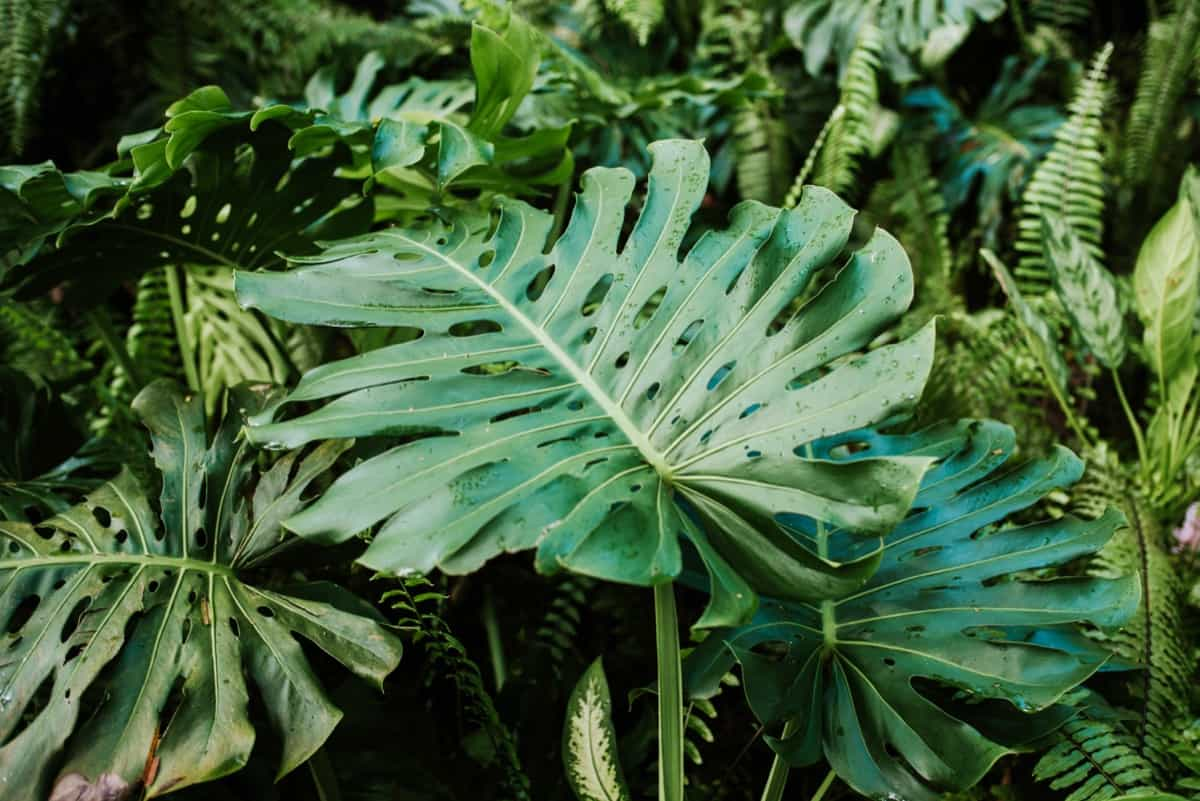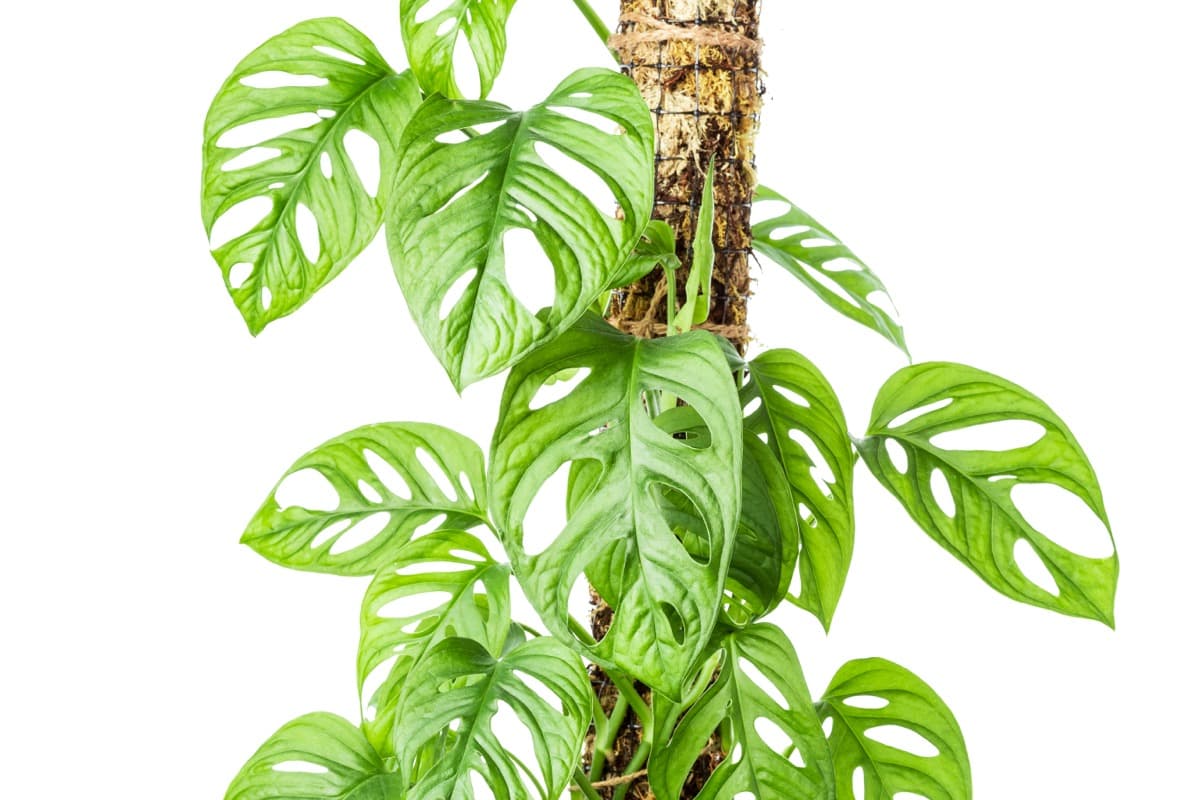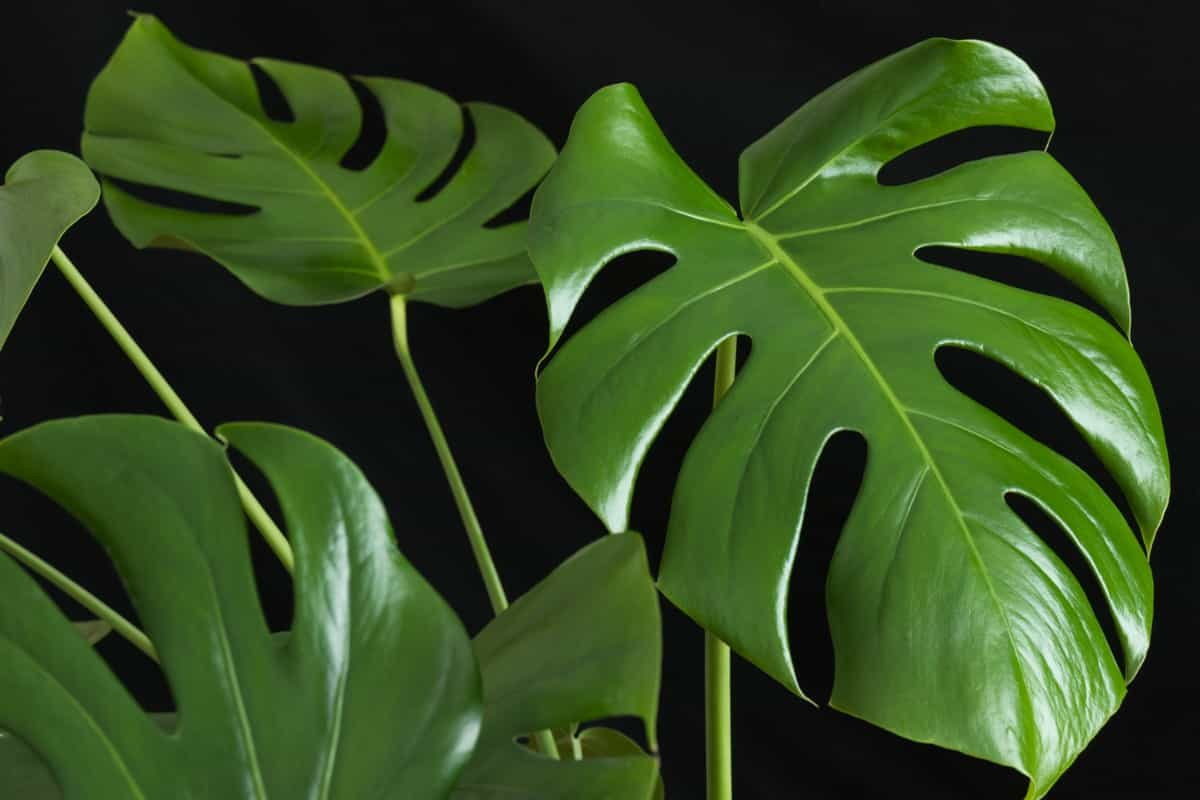Monstera plants, known for their vibrant, intricate foliage, are popular for indoor gardens. However, these plants may sometimes exhibit unusual behaviors, such as wilted, droopy, and curling leaves, leaving plant owners puzzled. This article will highlight ten reasons behind these symptoms and offer solutions for returning your Monstera to its vibrant self.

11 Reasons for Monstera Plant Wilted, Droopy, and Curling Leaves
Underwatering and Overwatering
One of the most common reasons for Monstera leaves drooping and curling is inadequate watering. Underwatering and overwatering can stress the plant, leading to wilting and curling. When the plant does not receive enough water, it lacks the necessary hydration to keep the leaves firm, causing them to curl and wilt.
Conversely, overwatering can lead to waterlogged roots, depriving them of oxygen and causing root rot. The plant’s inability to absorb water and nutrients leads to drooping and curling of its leaves. The solution is to establish a regular watering routine, ensuring the soil is moist but not soaked. Always check the top inch of the soil before watering. If it feels dry, it’s time to water.
Inappropriate Pot Size
Monstera leaves curling after repotting is often due to a pot size mismatch. The soil may hold too much water if the pot is too large, leading to root rot. The roots may become cramped if it’s too small, leading to stunted growth and curling leaves. Always choose a pot that matches the size of the plant. The pot should provide enough space for the roots to spread without being excessively large.
Inadequate Lighting
Monstera leaves curling backward are often a sign of inadequate light. These tropical plants love indirect sunlight. However, if the plant does not get enough light, the leaves can curl backward in search of more light. Conversely, if the plant receives too much direct sunlight, it can lead to leaf scorch, resulting in wilted and curling leaves. To solve this issue, place your Monstera in a well-lit area with plenty of indirect sunlight.
Lack of Humidity
Being a tropical plant, Monstera thrives in a humid environment. If the surrounding air is too dry, it can cause Monstera leaves to curl upward as they attempt to reduce their surface area to prevent water loss. Keep the humidity level suitable for your Monstera plant by using a tray with water and pebbles underneath or using a room humidifier.
Poor Quality Soil
The soil condition can significantly impact your Monstera plant’s health. If the soil lacks essential nutrients or does not drain properly, it can lead to Monstera leaves curling and turning yellow. Use a high-quality potting mix that contains the necessary nutrients and ensures adequate drainage.
Pests Infestation
Pests, such as aphids, spider mites, or mealybugs, can cause significant damage to Monstera plants, resulting in wilted, droopy, and curling leaves. Regularly check your plant for pest signs and promptly address any infestations. Various methods are available, including neem oil sprays, insecticidal soaps, or introducing natural predators of these pests, like ladybugs.
Temperature Fluctuations
Monstera plants do not respond well to sudden temperature changes. If the temperature drops or rises drastically, it can cause Monstera leaves to curl. Maintain a consistent temperature between 65 and 85 degrees Fahrenheit for your plant’s optimal growth.
In case you missed it: 10 Reasons Why Your Orchid is Dropping Leaves: Treatment, Control, and Solutions

Disease Infection
Monstera plants can sometimes suffer from diseases like root rot or leaf spot disease, which can cause leaves to wilt, droop, and curl. Monstera leaves curling and turning brown are often an indication of such diseases. As a solution, any diseased parts of the plant should be promptly pruned to prevent the spread of the disease. Also, ensure to sanitize any tools used for pruning to avoid contamination.
Nutrient Deficiency
Just like humans, plants also require a balanced diet to thrive. A deficiency in essential nutrients, such as magnesium, nitrogen, or potassium, can cause a Monstera’s leaves to curl and turn yellow. Feed your plant a balanced, water-soluble fertilizer every month during the growing season. However, be mindful not to over-fertilize, which can lead to nutrient burn.
Inadequate Air Circulation
Good air circulation is essential for healthy Monstera plants. Poor ventilation can create a breeding ground for fungi and pests, leading to curling and wilting leaves. Ensure your plant is in a space with enough room to breathe, and consider adding a small fan to your indoor garden to improve air circulation.
Incorrect pH Level
The soil’s pH level can significantly impact your Monstera plant’s health. Suppose the pH is too acidic or too alkaline. If so, it can impede the plant’s nutrient absorption, resulting in deficiencies and noticeable leaf problems like drooping, wilting, and curling. Monstera plants prefer slightly acidic to neutral pH levels, ideally between 5.5 and 7.0.
You may need to adjust your watering habits to rectify pH imbalances, as tap water can often be alkaline, or you might need to amend your soil. Soil amendments will depend on whether you need to raise or lower your soil’s pH level. Adding organic matter such as compost can often help buffer the soil pH and improve nutrient availability.
Should I Cut Off Drooping Monstera Leaves?
The answer to this depends on the severity and cause of the symptoms. If the drooping or curling is due to a disease or pest infestation and the leaf is severely damaged, it is generally best to prune these leaves to prevent further spread. However, suppose the leaf is only mildly affected, and the cause of the symptom has been rectified, such as adjusting the watering schedule or moving the plant to a more suitable location.
In case you missed it: 1-Acre Cashew Farming Cost and Profit: Production Economics, Cultivation Project Report

Conclusion
Maintaining a Monstera plant requires a balance of the right conditions. By understanding your plant’s signs, you can diagnose the cause of wilted, droopy, or curling leaves and take corrective action. Remember that plant care is a journey filled with learning and patience. As you grow alongside your Monstera, you’ll get to understand its specific needs better, ensuring it thrives for years to come.
If you notice symptoms like Monstera leaves drooping after watering, it may indicate that something in its environment needs adjusting. But with attention to detail and consistent care, you can address these problems and ensure your Monstera remains a striking feature of your indoor garden.
- Feed Your Flock for Less: Top 10 Tips to Save on Chicken Feed
- Ultimate Guide to Ossabaw Island Hog: Breeding, Raising, Diet, and Care
- Hatching Answers: The Top 10 Reasons Your Chickens Aren’t Laying Eggs
- Eggs and Economics: Breaking Down the Cost of Raising Backyard Chickens
- Defend Your Greens: Proven Methods to Keep Iguanas Out of Your Garden
- Ultimate Guide to Cinnamon Queen Chicken: A Comprehensive Guide for Beginners
- Ultimate Guide to California Tan Chicken: Breeding, Raising, Diet, Egg-Production and Care
- Ultimate Guide to Marsh Daisy Chicken: Breeding, Raising, Diet, and Care
- 10 Types of Chicken Farming Businesses You Can Start for Profits